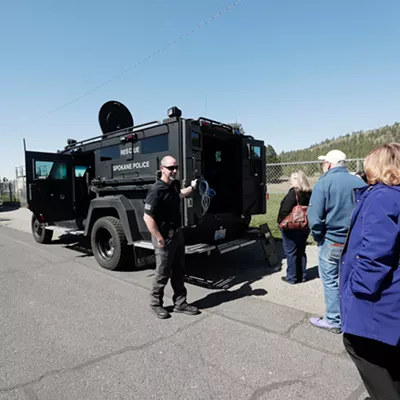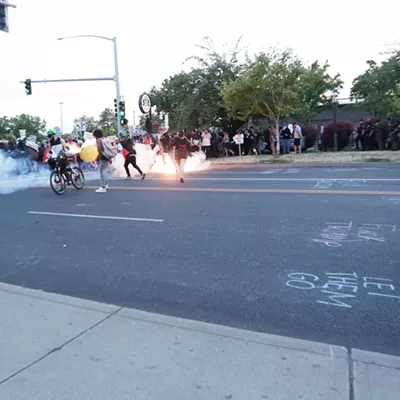Spokane Police Chief Anne Kirkpatrick says it doesn't matter to her if "excited delirium" has an elusive definition and a disputed reputation as a cause of death, she just wants her officers to be aware that there might be a mental health reason behind confrontational behavior they face on the streets.
"Officers respond to behavior," Kirkpatrick says, "I wanted to devise a protocol for our own officers to deal with excited delirium as a medical emergency."
The chief was at a joint press conference early this week, along with Mayor Dennis Hession and Fire Chief Bobby Williams to announce a unified response by police, emergency workers and mental health providers to try and prevent the sort of death suffered by Otto Zehm one year ago.
The phrasings used at the press conference -- excited delirium as a medical emergency -- are strikingly similar to those used in literature provided by the Institute for the Prevention of In-Custody Deaths (IPICD), which has links to Taser International.
John Peters, president of IPICD, founded the institute with Michael Brave, who is on the board of directors and who is also national litigation counsel for Taser International, which provides electric shock weapons to many police departments including Spokane.
Peters often testifies as an expert witness for Taser International. According to a recent National Public Radio story, the company has defended itself in at least eight lawsuits by arguing the cause of death was excited delirium and not use of a Taser. Taser International has also filed SLAPP suits against medical examiners who have listed the Taser as a cause of death.
Critics in the NAACP and the ACLU contend excited delirium is being used as a shield for excessive use of force by police in encounters with people such as Zehm.
Zehm was a 37-year-old mentally disabled janitor who died in restraints a year ago this week after a fight with Spokane Police officers who suspected him of involvement in an ATM robbery.
As it turns out, Zehm approached a car and frightened two young women who were withdrawing money from an ATM but he did not attempt to take any money and, although acting erratically, committed no crime. He was in a nearby convenience store apparently ready to buy a bottle of pop when he was approached from behind by an officer with a drawn baton. The fight, which involved as many as seven officers, started soon after.
Zehm stopped breathing while in arm and leg restraints, face down on the floor of the mini-mart.
"I think most people agree he should not have died. The job of everyone is to make sure no one else does, and the police are moving in that direction," says Breann Beggs, director of the Center For Justice, which is handling a lawsuit brought by Zehm's family.
Beggs and Center for Justice attorney Terry Sloyer praise the announcement of coordinated training. "We are glad they are doing more training to recognize mental health issues and learn techniques to de-escalate situations," Beggs says.
Spokane Police Sgt. Keith Cummings and assistant fire chief Brian Schaeffer outline several protocols that have changed since the Zehm death. Police will limit use of the Taser if it is not having any apparent effect in gaining control of the subject, Cummings says. Since last summer, Schaeffer says, firefighters are strictly prohibited from allowing police to use non-rebreather masks as "spit shields" on subjects. Police obtained such a mask from EMTs and placed it on Zehm without the oxygen bag. Zehm stopped breathing soon after.
Cummings says the new protocols are reviving crisis intervention training that was lost to the severe municipal budget cuts in 2002 and 2003. Officers with specific training to recognize and deal with mental health issues are available on every shift, he says.
Dr. Matt Layton of Spokane Mental Health is also involved in the training and notes the debate over the term "excited delirium." "We talked about is there a bright-line definition for excited delirium, and we decided, no, it was more of a description of behaviors."
Kirkpatrick, Layton, Cummings and others stress the term is being used to define certain behaviors that may indicate a person is beset with mental health issues and is not just acting criminally or out of hostility to police. In such cases the protocol is to get the person restrained and to a hospital quickly.
"A medical emergency can't wait," Layton says. "A criminal prosecution can wait."




















